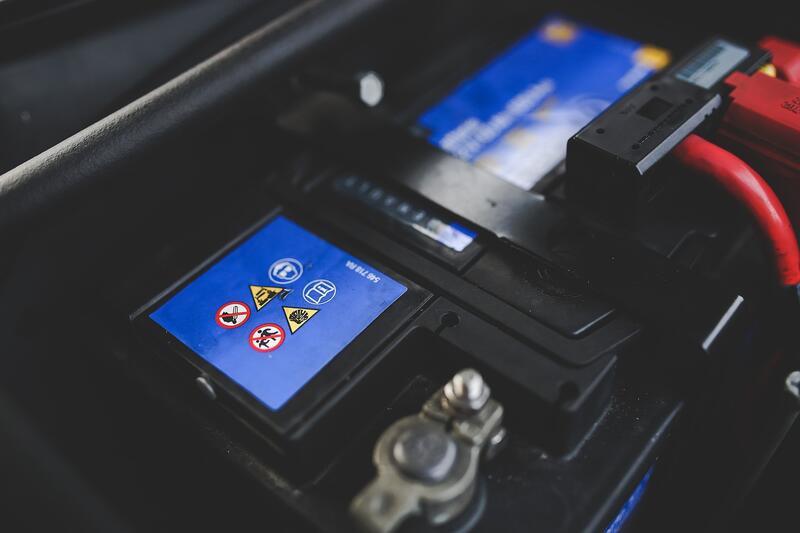Embracing a Low-Carbon Future: Decarbonization Strategies for Manufacture of batteries and accumulators
This article discusses decarbonization strategies for the manufacturing of batteries and accumulators in order to embrace a low-carbon future.

The manufacture of batteries and accumulators is a vital part of the global economy, with the demand for batteries increasing rapidly due to the growth of renewable energy and electric vehicles. However, the manufacturing process of batteries and accumulators is highly energy-intensive, which results in significant carbon emissions. Decarbonisation is the process of reducing carbon emissions to zero or near-zero levels. In this article, we will explore the importance of decarbonisation in the manufacture of batteries and accumulators sector, the main sources of carbon emissions, how to reduce carbon emissions, the challenges facing decarbonisation, and the implications of decarbonisation for the sector.
What is Decarbonisation in the Manufacture of Batteries and Accumulators Sector and Why is it Important?
Decarbonisation is the process of reducing carbon emissions to zero or near-zero levels. It is important because carbon emissions contribute to climate change, which has severe consequences for the environment, society, and the economy. The manufacture of batteries and accumulators is a significant source of carbon emissions due to the energy-intensive nature of the process. Decarbonisation of the sector is essential to reduce the carbon footprint and mitigate the impact of climate change.
The Main Sources of Carbon Emissions in the Manufacture of Batteries and Accumulators Sector
The main sources of carbon emissions in the manufacture of batteries and accumulators sector are energy consumption, material extraction, and transportation. The energy consumption in the manufacturing process is the largest contributor to carbon emissions. The production of battery cells requires a significant amount of energy, which is primarily generated from fossil fuels. The extraction of raw materials, such as lithium, cobalt, and nickel, also contributes to carbon emissions. The transportation of raw materials and finished products also adds to the carbon footprint of the sector.
How Can We Reduce Carbon Emissions in the Manufacture of Batteries and Accumulators Sector?
There are several ways to reduce carbon emissions in the manufacture of batteries and accumulators sector. One approach is to increase the use of renewable energy sources, such as solar and wind power, in the manufacturing process. This can be achieved by installing renewable energy systems on-site or purchasing renewable energy from off-site sources. Another approach is to improve the energy efficiency of the manufacturing process by implementing energy-saving technologies and practices. For example, using LED lighting, optimizing production processes, and recycling waste heat can reduce energy consumption and carbon emissions.
Reducing the carbon footprint of the sector also requires the use of sustainable materials and responsible sourcing practices. This includes the use of recycled materials, reducing the use of single-use plastics, and ensuring that raw materials are sourced from ethical and environmentally responsible suppliers. Additionally, reducing the transportation of raw materials and finished products can also help to reduce carbon emissions. This can be achieved by sourcing materials locally, optimizing transportation routes, and using more efficient modes of transportation, such as rail and water transport.
What are the Challenges Facing Decarbonisation in the Manufacture of Batteries and Accumulators Sector?
There are several challenges facing decarbonisation in the manufacture of batteries and accumulators sector. One of the main challenges is the high energy intensity of the manufacturing process, which makes it difficult to reduce carbon emissions. The production of battery cells requires a significant amount of energy, which is primarily generated from fossil fuels. The transition to renewable energy sources is also challenging due to the high capital costs involved.
Another challenge is the sourcing of sustainable materials. The demand for raw materials, such as lithium, cobalt, and nickel, is increasing rapidly, which has led to concerns about the environmental and social impacts of mining and extraction. Ensuring that raw materials are sourced sustainably and ethically is essential to reduce the carbon footprint of the sector.
The Implications of Decarbonisation for the Manufacture of Batteries and Accumulators Sector
Decarbonisation has significant implications for the manufacture of batteries and accumulators sector. The transition to renewable energy sources and sustainable materials will require significant investment in new technologies and infrastructure. This will create new opportunities for innovation and job creation in the sector.
Decarbonisation will also have implications for the supply chain of the sector. The sourcing of sustainable materials and the reduction of transportation will require collaboration and coordination across the supply chain. This will involve working with suppliers, customers, and other stakeholders to ensure that sustainability is integrated into the entire value chain.
Conclusion
The manufacture of batteries and accumulators is a vital part of the global economy, but it is also a significant source of carbon emissions. Decarbonisation of the sector is essential to reduce the carbon footprint and mitigate the impact of climate change. The transition to renewable energy sources, sustainable materials, and responsible sourcing practices will require significant investment and collaboration across the supply chain. Decarbonisation will create new opportunities for innovation and job creation in the sector and will have significant implications for the entire value chain.